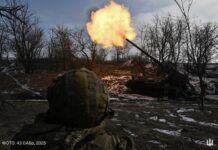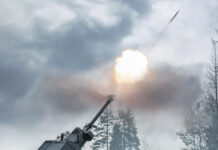The war in Ukraine has evolved rapidly into a brutal battlefield that has outstripped the ability of the established defence industries in both Russia and Ukraine to meet all equipment needs. This has led to a thriving ecosystem of frontline innovations. This article looks at five that are particularly interesting and assesses their impact.
Counter-drone corridors
In February 2024, images and videos were posted on Telegram showing Russian soldiers driving through net tunnels erected in the Bakhmut area. The tunnels were designed to protect vehicles and personnel from Ukrainian drone strikes behind the frontline. The Ukrainian armed forces had embarked upon a deliberate strategy in 2024 of isolating Russian units by striking up to 30 km behind the contact line. They developed and employed a mixture of heavy bomber drones such as the Vampire, which can carry a TM-62 anti-tank mine, and lighter first-person view (FPV) drones to disrupt the flow of vehicles moving back and forth between bed-down locations and forward fighting positions. This was combined with conventional artillery to the extent that Ukraine was effectively isolating frontline units, limiting their ability to rotate forces, resupply, or conduct coordinated offensive manoeuvres.
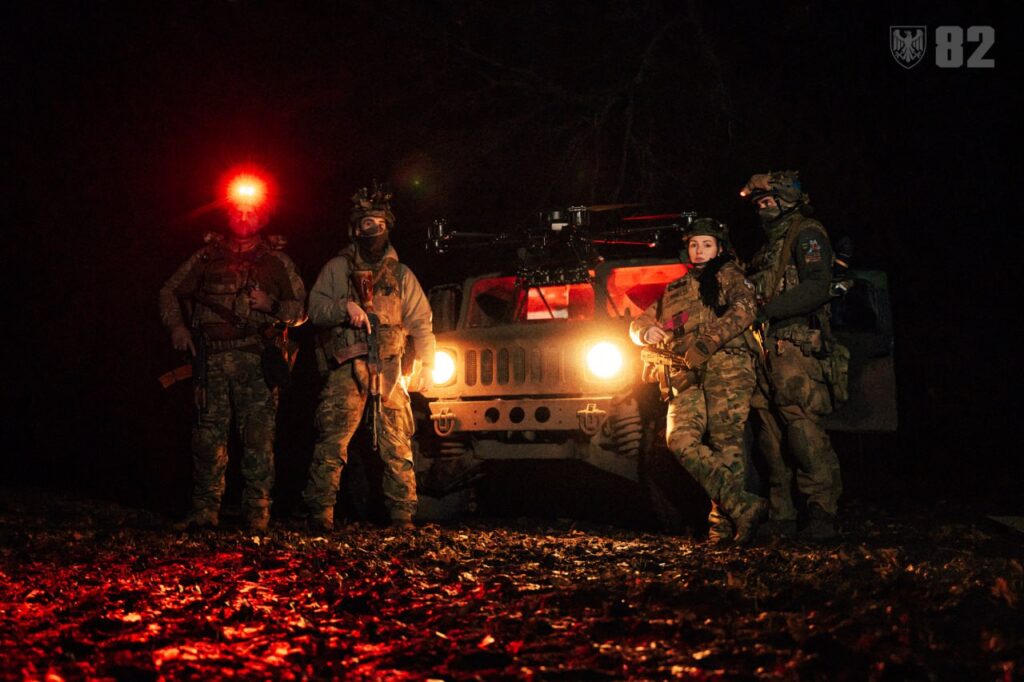
The approach is part of a wider effort amongst Russian units in that area to reduce Ukraine’s drone strike efficacy. Other measures include the use of specially equipped soldiers referred to as ‘drone busters’, who stand guard whenever drones are detected, ready to intercept them.
Are the nets worth the effort? Ukrainian soldiers seem to have taken a dim view of them, and they can likely be quickly destroyed using thermite-armed drones or by various other means. However, as part of a layered system of defence, which includes electronic warfare (EW), established hides along the roads, and ‘drone busters’, they likely improve the survivability of Russian units moving along those roads, which can otherwise be poor.
Drone busters
Before Russia’s 2022 invasion, images emerged of Russian special forces moving into the trenches somewhere in the Donbass region of eastern Ukraine. They were equipped with a sniper rifle, commercial quadcopter drone, and an anti-drone gun that used jamming to degrade the control link between a drone and its operator. Those soldiers were already aware of the risk posed by Ukraine’s drones, which had come to fill the artillery gap created by the 2014 Minsk Agreements.
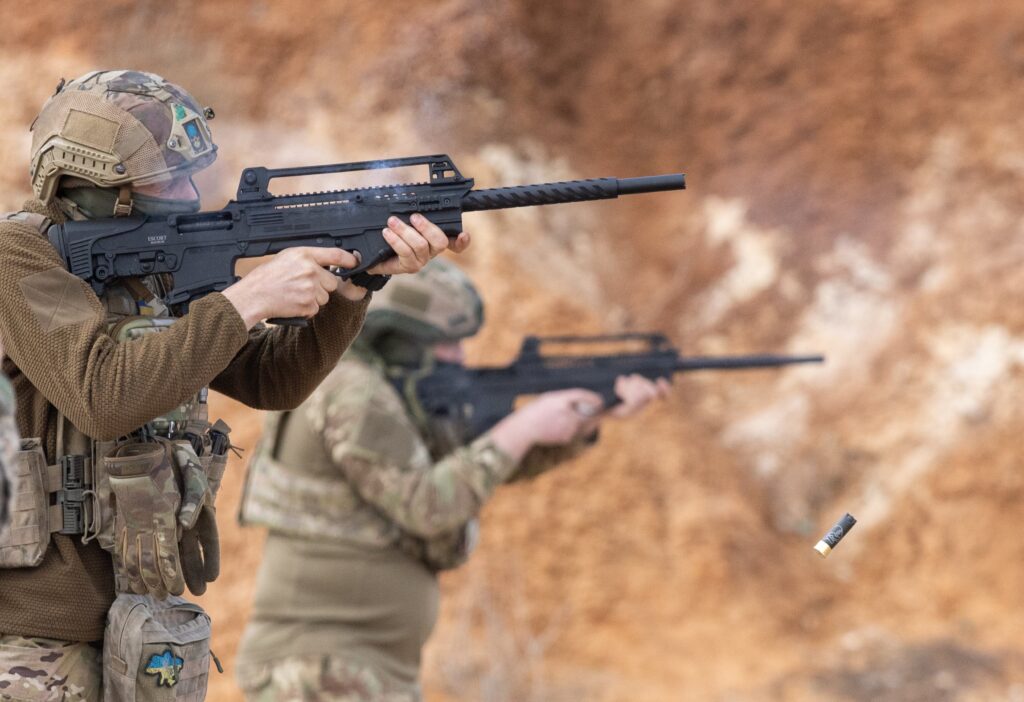
The type of shotgun employed varies enormously; some drone busters carry the military Saiga-12, a Kalashnikov pattern 12-gauge semi-automatic shotgun, typically with an eight- or ten-round box magazine, though smaller box magazines and larger drum magazines are also available. However, it is more common to see drone busters armed with break action and pump action shotguns, the former often appearing to be sporting designs like the TOZ-34 over-under shotgun. Often, drone busters also carry a standard assault rifle such as the AK-74 fitted with a collimator sight that provides a back-up option should the shotgun fail to bring the drone down. This may be a more common outcome than one might think. The kinetic energy of shotgun pellets declines rapidly with distance; this can be mitigated by using larger-grade shot, but this then reduces the number of pellets over a given area. So, poor cartridge selection, and inexperience in using a shotgun, which produces a different shot pattern to a rifle, could lead to failed interceptions.
The drone buster arsenal is completed with the addition of a drone jammer, which is often procured from China. One example includes the Harpy CKJ-1704 backpack drone jammer. The Harpy is designed to suppress drone signals over a radius of 2,000 m and can provide up to four hours of continuous jamming. It is claimed to provide 300 W output and to be effective against frequencies between 430 and 960 MHz. A drone detector, which monitors radio frequency (RF) signals, provides the final element of the drone buster kit.
This approach to drone defence appears valid and takes into consideration the elements needed to provide the greatest chance of a successful intercept. Refinements could be made, for instance shotguns equipped with red dot sights and purpose-built cartridges such as the Anti-Drone Long Effective Range (AD-LER) 12-gauge cartridge from Norma. However, this innovation generally appears to offer at least some defence against a threat that is otherwise very difficult to counter.
The ‘Turtle tank’
In 2021, prior to the invasion, tank units of Russia’s Southern Military District were observed with strange-looking cages installed over the roofs of their T-72B3s. Speculation swirled in the West as onlookers pondered the cage’s ability to degrade and fool the FGM-148 Javelin anti-tank guided missile. The reality was far less ambitious. For some years – since 2017 at least – Ukrainian units had used small drones to deploy grenades and mortars against Russian and separatist paramilitary forces in the East of the country. This was well-known to the Russian units sitting on the other side of the border, and so they developed the drone cages to try and protect their tanks, starting a trend that has spread around the world. Israeli Merkava IV tanks were observed with their own drone cages as they entered Gaza in 2023; the Chinese People’s Liberation Army (PLA) has released footage of Type 99 tanks fitted with the PLA’s own interpretation of the concept. Across the sea, Taiwan has shown an M60 fitted with an array of cages, and Vietnam modified a T-55, while India did the same with some of their T-90 tanks.
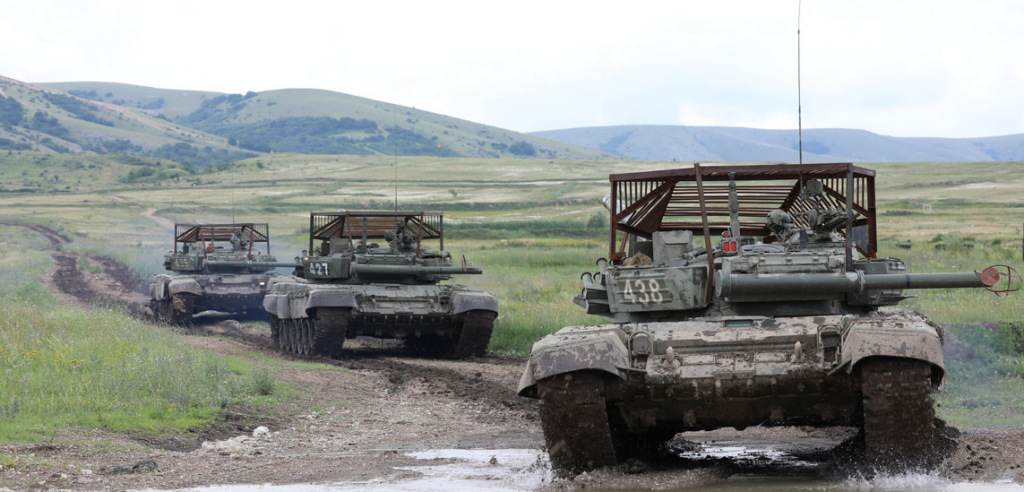
The shelters can be built from various materials, typically including some form of wire cage or mesh as the base structure that is used to build a house around the vehicle. Wood panels and other materials like corrugated or sheet metal are then added to the cage structure, limiting the crew’s ability to rotate the turret, as well as their situational awareness and mobility too. They were built in workshops along the frontline, and many other examples emerged quickly after the first version was observed. EW equipment is often found on the vehicles, as well as mine rollers or ploughs. “We are creating tanks that will go ahead to clear mines and attack the enemy,” one Russian soldier said.
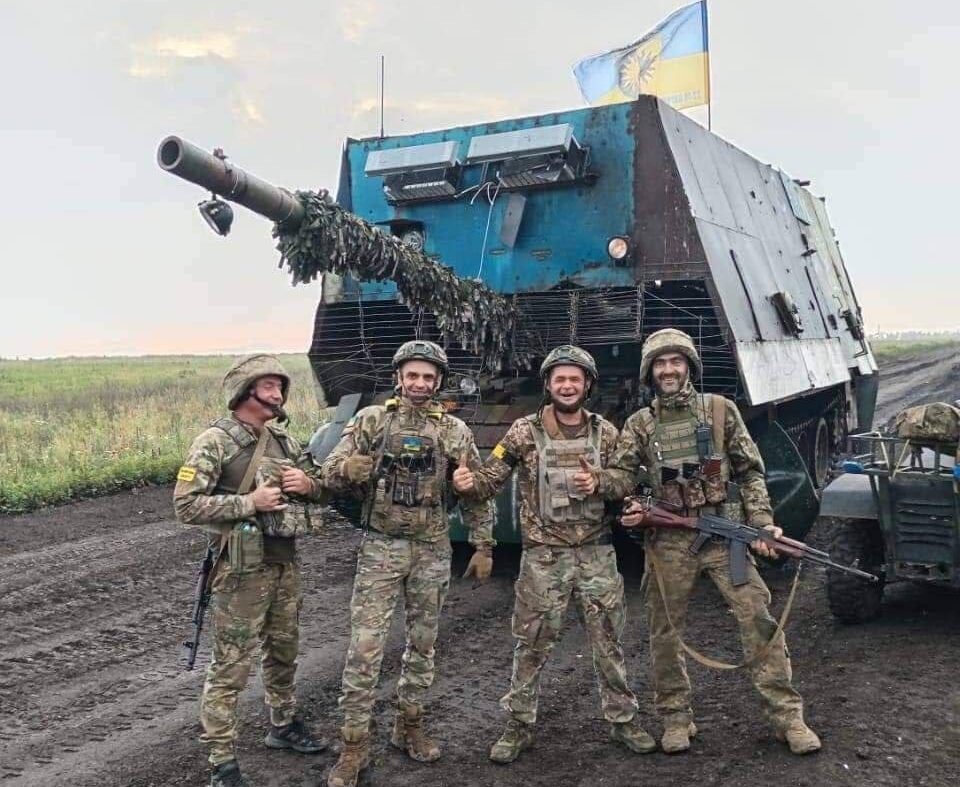
The turtle tank sets out to address a very specific set of interrelated challenges. In a typical offensive operation, Russian forces would expect an extensive artillery and air assault preparation with continued availability throughout the offensive. This would destroy enemy positions and suppress its fighters, making the advance easier, and providing time for mine clearance. However, with an ammunition shortage biting the Russian forces too, they could not rely on overwhelming firepower to clear the route ahead for them. This in turn meant that sending engineering assets to clear a minefield would be very likely to fail, as the Ukrainian forces had found in their own offensive the year before. If a vehicle was immobilised by mines, FPVs would ensure that it could not be recovered. So, the turtle tank provided a solution; enough protection to get through the minefields whilst absorbing FPV strikes.
Interceptor drones
Air defence became a serious problem for Ukraine as it depleted its stocks of munitions for its Soviet-era air defence systems. The consequences of this have ebbed and flowed with the availability of Western air defence systems, as well as additional missiles procured from abroad for Ukraine’s Soviet-era systems.

To help counter the almost ubiquitous Russian reconnaissance drones, which include the Z-16 series from Zala Aero and Orlan-10 from STC, Ukrainian units began engaging them kinetically with FPV drones. Video footage that shows an FPV approaching a class 2 fixed-wing drone from behind is now a relatively common sight on the social media channels of the Ukrainian MoD. The tactic expanded, and videos soon emerged of small class one drones physically crashing into each other to try and bring the adversary drone down. In another video, a Russian drone armed with a stick collides with a Ukrainian Baba Yaga with unclear results. However, the damage to the stick indicates that the video was probably not its first outing.
Over time, Ukraine appears to have become quite proficient at bringing Russia’s larger reconnaissance drones down using smaller FPVs. This is likely an important element of the air defence ecosystem, helping save missiles and other even scarcer systems for interceptions of high-threat systems such as missiles, fixed wing aircraft, and helicopters.
Molniya
The final innovation considered here is the Molniya family of fixed-wing OWA drones with FPV guidance developed by Russian forces that has grown in use. The best way to describe Molniya is to say that it is a minimal viable concept for a drone. It uses light and readily-available materials such as aluminium poles, plywood, and low-quality electronics. Russian media outlets indicate that it is assembled with tape and glue prior to launch. Despite its seemingly flimsy design, however, the original Molniya-1 has been used quite effectively and modernised to the more robust Molniya 2 design, distinguished by its two wing-mounted propellers instead of a single nose-mounted propeller, and sometimes also by its use of an aerodynamic fairing around the central portion of the craft.
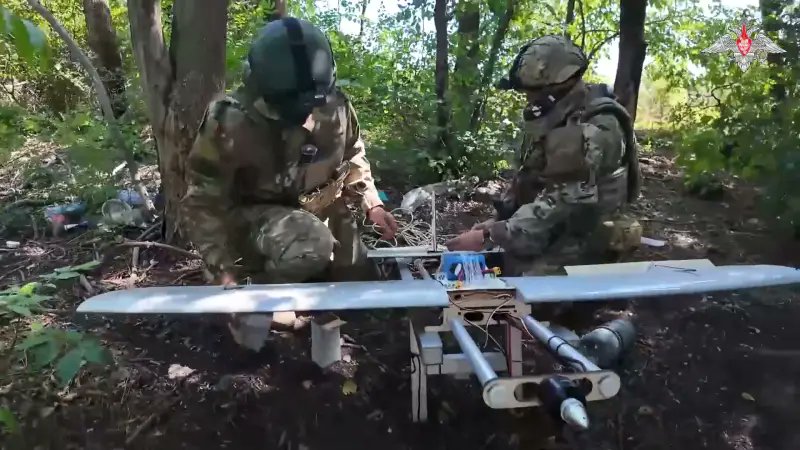
Adaptation, innovation, survival
Leon Megginson, Professor of Management and Marketing at Louisiana State University, stated in 1963 that, “it is not the most intellectual of the species that survives; it is not the strongest that survives; but the species that survives is the one that is able best to adapt and adjust to the changing environment in which it finds itself.” This quote (often misattributed to Charles Darwin, although it was originally made by Megginson while summarising his interpretation of Darwin’s ideas in ‘The Origin of Species’) neatly sums up the situation in the Ukraine war. A cycle of frontline innovations, some happening in as little as six weeks, has led to a violent and lethal battlefield where soldiers are constantly having to adapt to survive.
Sam Cranny-Evans







